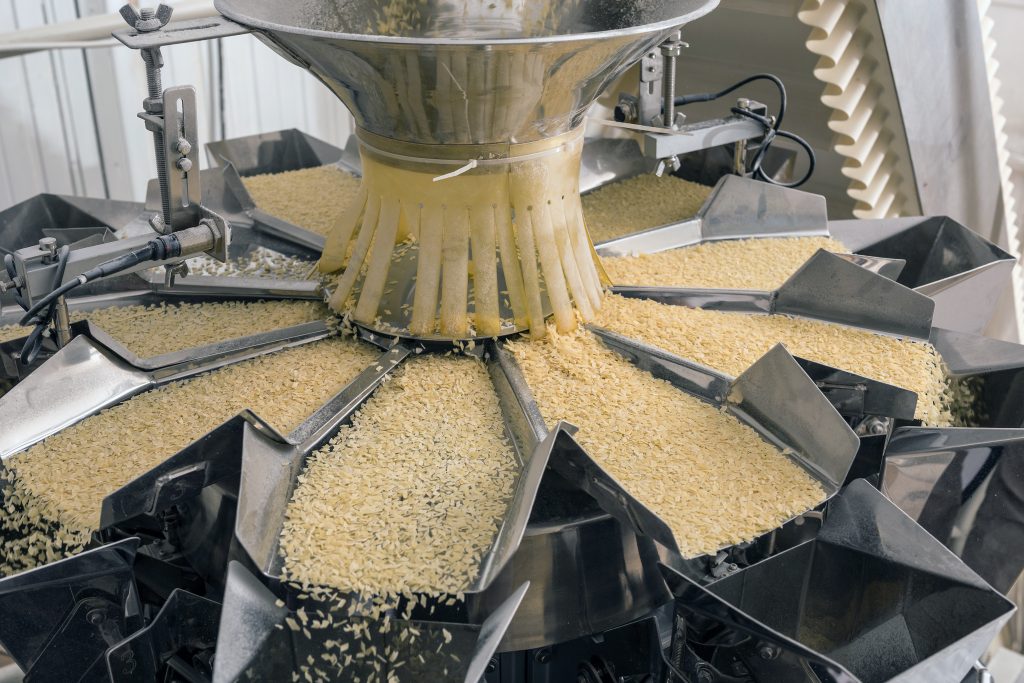
The food industry follows strict industry and government regulations for quality control and product safety. If your business fails to comply, you could face stiff fines and penalties and suspension of license. In cases when authorities feel that there’s a risk to consumer health, you may be required to recall all your products at your own expense.
Many of these industry regulations – such as the Good Manufacturing Practices (GMP), Hazard Analysis and Critical Control Points (HACCP), and the Codex Alimentarius – set standards for material handling efficiency.
For example, they require proactive, preventative measures against material spoilage and contamination. The food industry uses many materials that quickly degrade or develop mold or microorganisms. In addition to prioritizing safety and following proper handling practices, it is crucial to prevent your material from becoming stagnant and adhere to the FIFO principle.
First-In, First-Out (FIFO) Flow
In a nutshell, FIFO ensures that the oldest material is used first. It maintains the freshness, integrity, and even nutritional value and consistency of the material and the final product.
FIFO starts in the warehouse. Clearly label products with their production or expiration dates and establish proper inventory rotation procedures. Regularly monitor stock levels and adjust replenishment orders accordingly to maintain optimal inventory turnover.
However, FIFO is also important during the production process: when material sits in silos and hoppers. Many bulk powders and solids have a tendency to segregate or stick to vessel walls. Others are prone to bridging and ratholing.
Bridging occurs when a solid bulk material forms an arch or bridge over an opening, obstructing the material flow, while ratholing happens when material funnels through a central flow channel.
In all these cases, stagnant material is left inside the vessel. This increases the risk of spoilage and contamination and compromises the quality and safety of the entire batch run.
Achieve material handling efficiency and safety with AirSweep
AirSweep is an innovative flow aid system that can help achieve a First-In, First-Out (FIFO) flow during material handling.
AirSweep releases bursts of compressed air to dislodge and activate material that may have become stagnant or formed bridges or ratholes in storage vessels.
By installing AirSweep units at key points within the storage vessel or hopper, the system effectively breaks up material bridges and ratholes. Material can flow freely and consistently.
AirSweep is effective for all materials, including damp and sticky powders and solids used in the food industry. Watch how it works on corn grits that have been soaked in water and left in the hopper for three days. The air pulses break up the hard, cakey mixture in minutes.
AirSweep promotes material handling efficiency and food safety by:
- Facilitating FIFO or the removal of older material first before accessing fresh or newer material
- Preventing material segregation and stagnant zones
- Resolving bridging and ratholing
- Ensuring that the material flows uniformly and maintains its proper distribution within the storage vessel or hopper
AirSweep in the food industry
AirSweep systems are widely used in the food industry to improve material handling and ensure efficient flow in various applications.
- Silos. AirSweep can dislodge grains, flours, powders, and granules that have settled and become compact during storage.
- Hoppers. AirSweep ensures consistent discharge, maintaining proper ingredient flow and preventing material stagnation.
- Conveyors and chutes. AirSweep prevents material build-up and blockages to facilitate the smooth transfer of food materials between processing stages.
- Mixing and blending equipment. AirSweep promotes uniform material flow and prevents ingredient segregation, ensuring thorough blending and consistent product quality.
- Packaging and filling equipment. AirSweep maintains a consistent flow of food products for fast and accurate packaging operations.
USDA-accepted AirSweep
The USDA-accepted model is specially designed for the food industry and other industries requiring sanitary equipment and frequent cleaning.
- Only the nozzle tip comes in direct contact with the material, preventing contamination
- The flanged connections allow quick removal and re-installation with simple hand tools
- The surfaces are also resistant to corrosive products and industrial-grade cleaning chemicals
Watch the video to see why AirSweep USDA-accepted model is the best choice for achieving material handling efficiency and safety in the food industry:
Trusted by food manufacturers worldwide
AirSweep is used by some of the world’s leading food manufacturers, local businesses, and SMEs. Read more about AirSweep in the food industry or contact us for a customized presentation and proposal.





Comments are closed